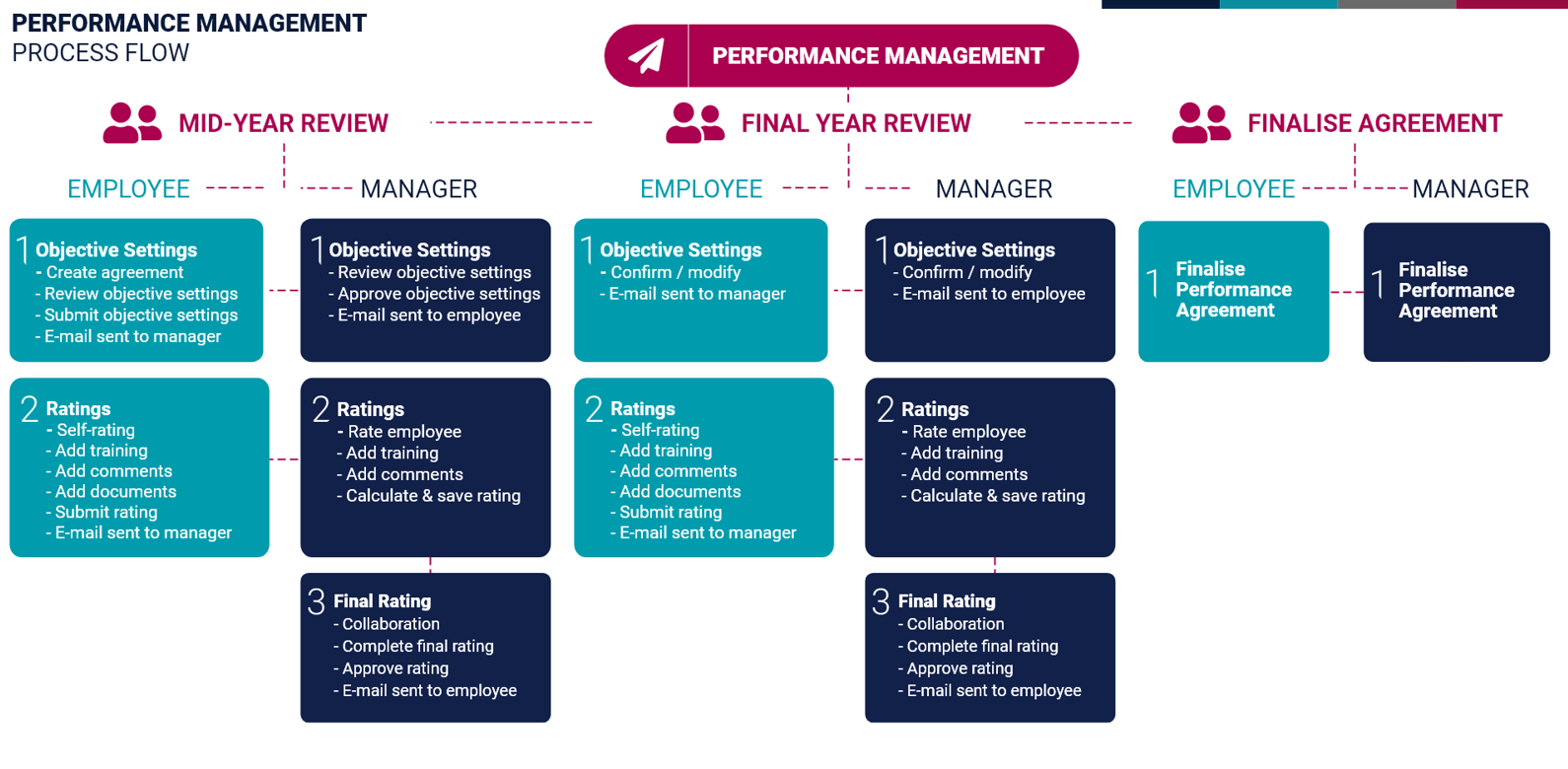Roles and Responsibilities
The performance management product supports three primary role players. See below for a breakdown of their responsibilities.
The diagram shown here outlines the typical responsibilities of a manager and employee in a two-review-period performance year.
User / Employee
- Discuss the manager's expectations for the performance year with the manager.
- Create your own performance contract, by:
- Using a contract template with predefined objectives in a number of predefined agreement sections.
- Or start the agreement creation from scratch.
- Or copy a historical contract as a starting point.
- Balance section, and objective weights across all agreement sections.
- Submit the contract to the manager for consideration and approval.
- Participate in check-ins performed by the manager.
- Self-rate the agreement objectives during the review period and submit them to the manager.
- Discuss the objectives and their self-rated scores with the manager.
- Re-contract the objectives (if needed) during every subsequent assessment period.
Performance Manager
- Discuss the performance year expectations with the employee.
- Assist the employee with performance contract creation, by:
- Using a contract template with predefined objectives in a number of predefined agreement sections
- Or start the agreement creation from scratch.
- Or copy a historical contract as a starting point.
- Or copy a contract from another employee as a starting point.
- Consider the contract, balance objectives and section weights, and approve.
- Perform objective check-ins.
- Do a personal rating of the agreement objectives during the review period.
- Discuss the objectives and personal (manager) scores with the employee during the review period. Provide the final scores per review period and approve the period.
- Re-contract the objectives (if needed) during every subsequent assessment period.
Performance Management Administrator
- Assist the employee and manager with all their responsibilities.
- Manage the master data:
- Update libraries.
- Create and/or deactivate performance cycles.
- Create agreement templates.
- Do score moderation.
- Reporting


